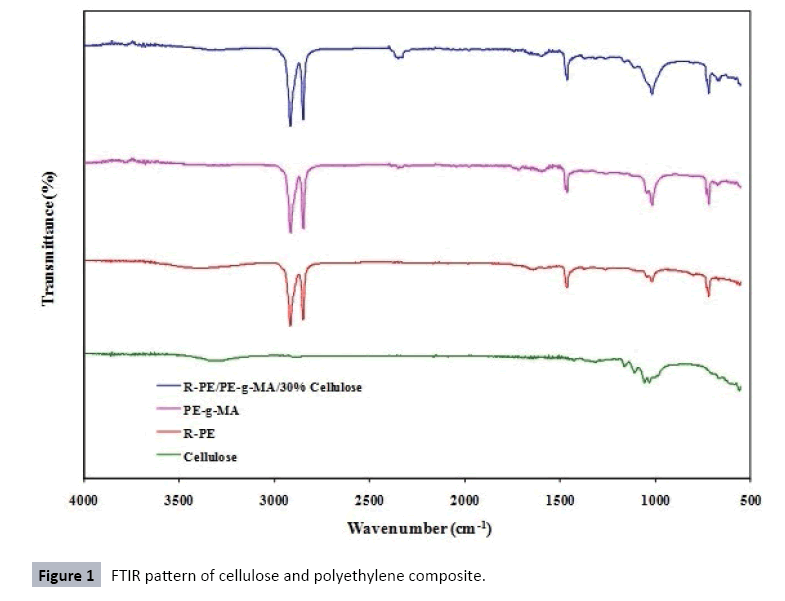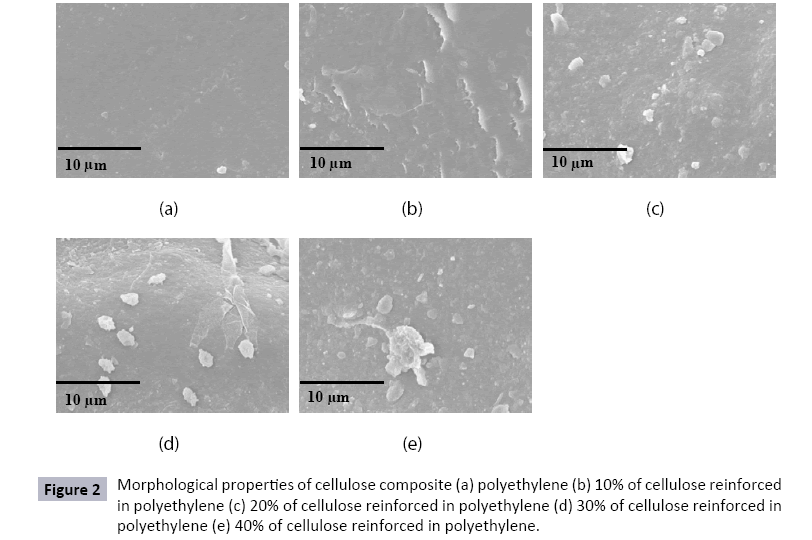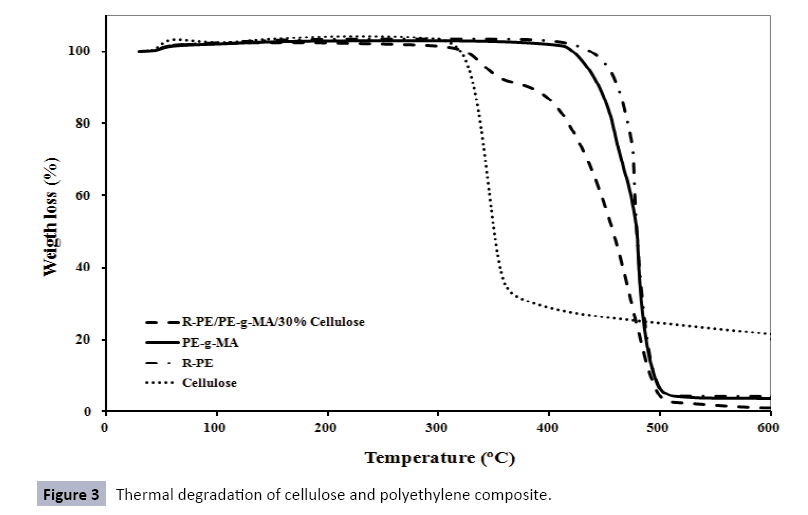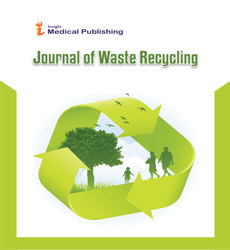Recycled Polyethylene and Waste Cellulose Composite: A Strategic Approach on Sustainable Plastic Packaging Application
1Materials Research Center, In Collaboration with Horiba Scientific and Thammasat University, Patumtani, 12120, Thailand
2Advanced Functional Polymeric Materials Research Group, Faculty of Science and Technology, Thammasat University, Patumtani, 12120, Thailand
- *Corresponding Author:
- Pechyen C
Advanced Functional Polymeric Materials Research Group
Faculty of Science and Technology
Thammasat University, Patumtani, 12120, Thailand
Tel: +6625644490
Fax: +6625644458
E-mail: chiravoot.p@gmail.com
Received Date: June 21, 2017; Accepted Date: October 14, 2017; Published Date: October 23, 2017
Citation: Mhumak C, Pechyen C (2017) Recycled Polyethylene and Waste Cellulose Composite: A Strategic Approach on Sustainable Plastic Packaging Application. J Waste Recycl Vol.2 No.2:8
Abstract
Cellulose based composite was successfully designed as composite. Small amount (10-40 wt%) of cellulose with 10 micron in diameter was integrated into polyethylene matrix. The use of maleic anhydride was employed as coupling agent. The excellent properties on compatibility between modified cellulose and polyethylene matrix were successfully prepared. Thermal and mechanical properties of cellulose based composite were superior depending on polyethylene. Thermal stability of composite was stable up to 300°C. In addition, significant enhancement on tensile strength and Young’s modulus of composite was double compared to neat polyethylene matrix. Morphological properties of cellulose based composite presented the good distribution and excellent uniformity. Cellulose network was filled by polyethylene matrix. Uniformity and distribution in size of cellulose was prepared. It was remarkable to note that cellulose derived from cotton can be prepared as composite with polyethylene matrix.
Keywords
Cellulose; Polyethylene; Composite; Recycle and degradation
Introduction
Due to the growth of human population and mankind, the use of plastic based materials has been extensively employed on many areas of research. The role of plastic has been strongly considered as systematic technique in order to predict on the growth of worldwide population [1-3]. The utilization on plastic has been enabled in many sectors of research such as infrastructure, automotive part, medical and pharmaceutical purposes as well as electronic device. It was important to note that utilization of plastic was considered as an important key factor in order to predict on the growth of worldwide population. Up to the present time, numerous approaches have been developed on the plastic from academic research to industrial commercialization.
From the fundamental point of view, it was remarkable to note that plastic can be classified into two different routes. The development of plastic was basically categorized into two different approaches, depending on synthetic method and utilization. The one was referred to commodity plastic. It was commonly employed in many purposes of use. The example of commodity plastic was due to polyethylene, polystyrene, polypropylene and polyvinylchloride and so on. While the other one was referred to engineering plastic. The use of this plastic was specific in engineering application which was considered on high temperature resistance, excellent mechanical properties as well as electrical properties. One of our interests on the use of plastic was focused on polyethylene and its derivative. From the structural point of view, polyethylene was considered as a thermoplastic polymer consisting of long hydrocarbon chains. The properties of polyethylene were versatile depending on crystallinity, molecular weight as well as crystal orientation. It can be therefore categorized into both low density and high density polyethylene, depending on processing and chain orientation, respectively. With easy availability, low cost, and good processability, utilization of polyethylene was mainly enrolled in packaging industry. It can be designed to be plastic bags, plastic films, geomembranes and food container [4-8]. Since the application of polyethylene was focused on packaging, it can be implied in order to predict on the growth of population as well as human mankind. With the growth on population, the utilization on polyethylene as packaging was considered as effective footprint. It can be considered as a key factor in order to predict on the use of plastic from the growth of population. Furthermore, it can be rendered to as a waste, residual and it was therefore considered as environmental issue. The challenge on utilization of polyethylene with respect to environmental concern should be preferably conducted in order to be safety and economic reasons.
To be sustainable, interest in biodegradable and disposable plastics has been developed from the past decades. Numerous approaches have been extensively developed on the use of plastic in order to be sustainable. To solve this issue, small amount of cellulose has been investigated on the feasibility to be inserted in polyethylene as composite [9-12]. It was remarkable to note that cellulose was considered as one of the most abundant naturally occurring bio-based polymer. It was commonly found in the cell walls of plants and certain algae. Moreover, cellulose can be effectively derived from fermentation of bacterial specie. It was called as bacterial cellulose. The most effective bacterial specie was due to Acetobacter Xylinum. With this concept, the use of biodegradable plastic was successfully designed. Small amount of cellulose can be embedded into polyethylene plastic. The existence of cellulose in polyethylene matrix was prepared as binary blend compound. Polyethylene can be melt and it was inserted into porosity of cellulose network. This process can be called as “Green polyethylene composite”. Moreover, it was remarkable to note that due to excellent properties of cellulose, the properties of polyethylene composite were therefore enhanced. The evidence was due to high thermal resistance, high mechanical properties as well as chemical resistance. It was realized that the role of cellulose can be tailored on the use of polyethylene with a versatile properties.
The objective of this research work was to investigate on the structure of cellulose and polyethylene composite. Small amount of cellulose (less than 50 wt%) was therefore integrated into polyethylene matrix. Significant enhancement on thermal stability and mechanical properties of composite was therefore observed. Investigation on structural and morphological properties was therefore conducted. Preliminary experiment on biodegradability of composite was also evaluated.
Materials and Methodologies
Materials
Powder form of recycle polyethylene was obtained from MMP Packaging group, Thailand. The melting temperature was estimated to be 135°C. Cotton fabric waste was obtained from Phairoj weaving Co., Ltd., Thailand. The average length was due to 5 mm. Polyethylene-grafted-maleic anhydride was obtained from Creative Polymers Co., Ltd. (Thailand). Sodium hydroxide and hydrochloric acid were purchased from Sigma Aldrich, Co., Ltd., Thailand. All chemical reagents were used as received without further purification.
Methods
Cellulose extraction: Cellulose microfiber, from cotton fabric waste was treated by conventional reaction technique. 100.0 g of cellulose micro-fiber was transferred into 2.0 M hydrochloric acid solution (500 mL). The reaction was heated to 80°C for 4 hours. The suspension of cellulose was then filtered and thoroughly washed with distilled water until neutral pH. The process was involved on the removal of any remaining impurities, medium component and soluble polysaccharides. The water was removed from the suspension through filtration with a Buchner funnel fitted with Polytetrafluoroethylene membrane (0.1 micron mesh, 90 mm diameter), which was connected to a Buchner flask and vacuum pump. After that cellulose was therefore obtained.
After that, 250 mL of sodium hydroxide was poured into cellulose suspension. The reaction was stirred at 60°C for 4 hours. The micro-fiber were then filtered and washed with distilled water until neutral pH.
Recycle polyethylene/cellulose microfiber preparation: Recycle polyethylene and cellulose composite was prepared by melt mixing technique. The mixture among polyethylene, maleic anhydride and cellulose was poured into internal mixer. Small amount of cellulose was loaded ranging from 10, 20, 30, and 40 wt%, respectively. Melting temperature and mixing torque were recorded during the mixing periods. Die temperature was maintained at 190°C and cooling was provided with a single lip air ring. The bubble inflation pressure was set between 0 or 660 Pa, respectively.
Characterization
Mechanical properties analysis
Tensile tests were carried out with a universal testing machine Instron 8801 according to ASTM D882-95a. Dumbbell specimens of 1 mm thickness were cut from the compression mould sheets with a Wallace die cutter. A cross-head speed of 5 mm/min was used and the test was performed at 25 ± 3°C. Five specimens were used to obtain average values for tensile strength, elongation-atbreak and Young's modulus.
Morphological properties analysis
The specimens submitted to tensile tests were cut and the composite intact fracture surface was analyzed in JEOL (JSM 5310) scanning electron microscopy with tungsten filament operating at 15 kV, employing low vacuum technique and secondary electron detector. Prior to investigation, sample was gold-coated in order to enhance the electrical conductivity.
Structural properties analysis
Fourier-transform infrared spectroscopy (FTIR, Perkin Elmer System 2000) was used to obtain some qualitative information about the functional groups and chemical characteristics of the composite. For analysis, 60 consecutive scans with 4 cm-1 resolution were recorded. Samples were measured in the form of films of about 30 μm thickness, prepared by extrusion blown molding. The region of wavenumber was set to be 4000-400 cm-1.
Thermal properties analysis
Thermal degradation of composite was performed to understand the thermal stability of composite. Thermogravimetric fibers parameters were generated in a Mettler Toledo instrument model TGA/STDA851e. The experiments were carried out under continuous nitrogen flow and with a heating rate of 10°C min-1. The investigation temperature was set from room temperature to 600°C.
Biodegradation
The compost-ability tests of 5 cm × 5 cm specimens were done in a laboratory-scale composting bin and the compositions were given elsewhere [13,14]. The compost bin was covered with green grass around and moisture content was maintained by spraying water periodically. To avoid anaerobic conditions, the bin was constantly aerated with oxygen through a hollow tube. Compostability was measured in terms of weight loss (%), which is calculated using the following formula:
Weight loss (%)=[initial weight (g) − final weight (g)/initial weight (g)] × 100
Results and Discussion
The aim of this research work is to prepared cellulose and polyethylene composite. Small amount of cellulose and polyethylene compound was prepared by melt-process. However, it was remarkable to note that to prepare cellulose and polyethylene composite, consideration on the inherent polar and hydrophilic nature of cellulose lead to difficulties in compounding with most of non-polar thermoplastic matrix. The aggregation of cellulose in polyethylene matrix also seriously affects on mechanical properties. To overcome these difficulties, cellulose was successfully embedded into polyethylene composite by melt-processing technique. The existence of cellulose fiber was inserted into polyethylene composite. Polyethylene was therefore melted and flowed into 3D porous network of cellulose, similar to web-network. It was important to note that significant enhancement in terms of mechanical properties was increased with respect to amount of cellulose. This was probably due to impregnation and wetting ability of cellulose. It can be explained that the role of cellulose was due to the excellence on stress transfer in between fiber and matrix. Table 1 exhibits the mechanical properties of cellulose and polyethylene composite. The neat polyethylene was also provided for comparison. It was remarkable to note that the existence of fiber can be enhanced on mechanical properties of polyethylene. The amount of fiber and its orientation was therefore considered. Significant enhancement of Young’s modulus, mechanical strength and elongation at break was therefore obtained. To be enhanced, the role of cellulose was due to interfacial adhesion in between polyethylene. Significant enhancement on mechanical properties was due to interfacial adhesion between reinforcement and matrix. Less fracture was therefore observed for cellulose and polyethylene composite. Mechanical properties of the difference of cellulose microfiber loading in composite film with and without grafted maleic anhydride.
Table 1 Mechanical properties of the difference of cellulose microfiber loading in composite film with and without grafted maleic anhydride.
| Specimens | Tensile strength (MPa) | Tensile modulus (MPa) | % Elongation |
|---|---|---|---|
| A | 1.62 (0.63) | 603 (1.21) | 5.92 (1.45) |
| A-(10%)C | 1.71 (0.94) | 640 (2.39) | 3.86 (0.59) |
| A-(20%)C | 1.80 (1.02) | 725 (4.67) | 3.20 (1.37) |
| A-(30%)C | 1.41 (0.66) | 582 (6.31) | 2.99 (1.36) |
| A-(40%)C | 1.25 (0.57) | 565 (1.64) | 2.81 (3.03) |
| A-B-(10%)C | 1.91 (0.94) | 790 (8.56) | 3.01 (0.98) |
| A-B-(20%)C | 4.96 (1.02) | 875 (3.09) | 1.78 (2.31) |
| A-B-(30%)C | 9.90 (0.66) | 1132 (6.14) | 1.35 (1.14) |
| A-B-(40%)C | 5.10 (1.05) | 899 (7.32) | 0.82 (0.79) |
On the other hand, the increment on mechanical properties was due to the existence of maleic anhydride. It can be presented from the interaction between cellulose and polyethylene. Compare to non-grafting reaction, the role of maleic anhydride can be attached on the interfacial adhesion in between cellulose and polyethylene. On contrary, it was controversial that the optimum amount of cellulose should be controlled; it may provide the agglomeration among cellulose fiber.
Cellulose was successfully reinforced into polyethylene as composite. The role of maleic anhydride was considered as compatibilizer. The criterion of compatibilizer was a key factor to determine the properties of composite between cellulose and polyethylene. Depending on structure, the use of maleic anhydride was due to the ester forming ability of anhydride groups with hydroxyl groups on cellulose, and the hydrogen-bond-forming between the carboxyl groups of hydrolyzed maleic anhydride and hydroxyl groups on cellulose network. On the other hand, it may involve on the good compatibility in between polyethylene network. Figure 1 exhibit the FTIR characteristic; there were two characteristic peaks of polyethylene and cellulose composites, with those at 3200 cm-1 to 3400 cm-1 attributed to C-O-H bond stretching, and that near 1634 cm-1 attributed carboxyl/ester group formed between cellulose and polyethylene. However, no different feature between with and without maleic anhydride was therefore investigated. The peak position at 1300-1500 cm-1 was attributed to the C-H stretching in the molecular vibration of both cellulose and polyethylene. FTIR pattern of cellulose and polyethylene composite (Table 2) infrared assignments of cellulose and polyethylene composite.
Table 2 Infrared assignments of cellulose and polyethylene composite.
| Major infrared bands of components | |
|---|---|
| Wavenumber (cm-1) | Assignment |
| 3400-3200 | O-H stretching bond |
| 3000-2700 | Typical CH2 and C-H bending |
| 1635 | Carboxyl/ester group (C=O) |
| 1460 | CH2 bending |
| 1375 | C-H bend due to CH2 and CH3 |
| 1340 | O-H in plane bending |
Figure 2 shows the morphological properties of polyethylene and cellulose composite. The neat of polyethylene matrix was also provided for comparison. It was remarkable to note that the uniformity of cellulose and its dispersion was therefore observed for binary blend composite. The existence of cellulose was prepared as network-like structure and polyethylene was inserted into porous network. The presence of cellulose diameter was still in micron region with uniformity in size and shape, suggesting that good orientation of cellulose can be prepared in binary blend composite. On the other hand, it can be noted that with the high magnification, cellulose fiber did not physically damage by the melt-blending process at high temperature. It was still presented as long elongated nanofibers. It can be indicated that cellulose and polyethylene composite was successfully prepared. It can ensure the stress transfer from cellulose to polyethylene matrix efficiently and timely. On the other hand, it was important to note that after pull-out test, the weak interaction between cellulose and polyethylene was therefore observed. The interface region was therefore evaluated; it may imply on the surface interaction between cellulose and polyethylene was prepared in still in the good agreement. The adherent properties can be explained due to the existence between hydroxyl group of cellulose and polyethylene. It can be formed either hydrogen or ester bond. Both materials composed of large amount of hydroxyl group. Morphological properties of cellulose composite (a) polyethylene (b) 10% of cellulose reinforced in polyethylene (c) 20% of cellulose reinforced in polyethylene (d) 30% of cellulose reinforced in polyethylene (e) 40% of cellulose reinforced in polyethylene
Figure 3 exhibits the thermal decomposition of cellulose and polyethylene composite. The neat polyethylene was also provided for comparison. It was remarkable to note that the region of weight loss can be categorized into three different regions. From room temperature to 300°C, no weight loss was therefore observed. It can be noted that no thermal decomposition was observed. High thermal stability was observed within the range of temperature of 25 to 300°C. Furthermore, with the increment on temperature to the region of 300-500°C, the decomposition of composite was therefore evaluated. It was due to the degradation behavior of both cellulose and polyethylene in composite. Material became degraded under applied external heat. However, in case of composite structure, the degradation region was slightly higher under the similar applied external heat. From the fundamental point of view, cellulose exhibited high thermal stability compare to neat polyethylene matrix. The degradation temperature in case of composite was therefore slightly high. Within this degradation region, it was involved in the degradation of organic compound from both of cellulose and polyethylene matrix. Large region of weight loss was therefore observed. Furthermore, with the increment on temperature higher than 500°C, the decomposition was therefore terminated. The organic phase from both of cellulose and polyethylene presented as a residual and char. No weight loss was therefore observed.
The weight loss of composite is presented in Table 3. From the table, it may be observed that the degradation occurred in a rapid rate in the presence of the cellulose microfiber in the polyethylene matrix. Cellulose microfiber composites are sensitive to water absorption, which affects both the dimensional stability and the mechanical properties of the composite materials. The non-irradiated ï¬ÂÂlms of the composites show higher weight loss than neat polymer and the weight loss was observed to be increased with increasing content of the ï¬ÂÂbers. The hydrophilic nature and bio-assimilability of ï¬ÂÂbers facilitates adhesion of the microorganisms on the surface of the composite ï¬ÂÂlms. At the beginning of experiment, the weight loss (%) of the composites was found to be low and increased with increasing time. The reason was involved on heat transfer mechanism from rim to inside. From the fundamental point of view, in case of composites where one component degrades faster than other, the weight loss in biotic conditions would mostly be due to degradation of that component. Polymer matrix would remain intact. The loss of ï¬ÂÂbers from the composites may decrease the mechanical integrity of samples. Therefore the non-irradiated ï¬ÂÂber composites could not be true biodegradable material, but they can be disintegrated. Another reason was due to disintegration of cellulose into polymer matrix. This disintegration might facilitate the invasion of microorganism but not the complete degradation of the matrix. The difference in results presented here depicted the difference in the bio-accessibility of only neat ï¬ÂÂber. From the fundamental point of view, in cotton ï¬ÂÂbers, cellulose which is most susceptible to biotic degradation is cross linked (phenolic linkage) with lignin and other extractives. Since the lignin is aromatic based component, it could reduce the bioaccessibility to the cellulose chains [15,16]. Therefore, variation in alkali treatment influences the bio-disintegrability of ï¬ÂÂbers. The enhancement in bio-accessibility by combined pretreatments might be attributed to the enhancement of surface area at which enzymatic hydrolysis would be rapid [17]. They have already reported chains that the photo-oxidized polyoleï¬ÂÂn ï¬ÂÂlms are more susceptible to the biodegradation than neat polymer ï¬ÂÂlms due to the fact that crack formation on the surface and photo-degraded products in the ï¬ÂÂlms facilitate the adhesion and penetration microorganisms into the matrix. Biodegradability testing of photo-irradiated composites in composting and fungal culture incubation methods is under progress. The preliminary results of photo-irradiated composites have shown the higher weight loss than non-irradiated composites. However, the inherent and complete degradation of polyoleï¬ÂÂn matrix require pretreatment (photo-oxidation/thermo-oxidation). Therefore, it will become convenient to choose the pathways for disposal of commodities based on the ï¬ÂÂber-reinforced composites. In addition, the biodegradability by following the weight loss (%) in composting environment may not represent the true biodegradability of the materials, as the microbial colonization on the composites which may increase the weight of the ï¬ÂÂlms and affect the consistency of biodegradability values.
Table 3 Biodegradation of the difference of cellulose microfiber loading in composite film.
| Specimens | Weight loss (g) | ||||
|---|---|---|---|---|---|
| 0 Day | 14 Day | 28 Day | 56 Day | 112 Day | |
| A | 0.9434 | 0.9406 | 0.9311 | 0.9278 | 0.9223 |
| A-(10%)C | 1.0638 | 1.0604 | 1.0030 | 1.0005 | 0.8899 |
| A-(20%)C | 1.1869 | 1.1523 | 1.0614 | 0.9916 | 0.9004 |
| A-(30%)C | 1.2435 | 1.2400 | 1.1738 | 1.0051 | 1.0006 |
| A-(40%)C | 1.2497 | 1.2333 | 1.1836 | 0.9970 | 0.9925 |
| A-B-(10%)C | 1.0214 | 0.9923 | 0.9816 | 0.9602 | 0.9488 |
| A-B-(20%)C | 1.2440 | 1.1581 | 1.0003 | 0.9731 | 0.9010 |
| A-B-(30%)C | 1.3556 | 1.2078 | 1.0185 | 0.9892 | 0.8904 |
| A-B-(40%)C | 1.3816 | 1.2680 | 1.1731 | 0.9994 | 0.9003 |
Conclusion
Cellulose was successfully prepared from cotton and it was employed as filler in polyethylene matrix. Significant enhancement on mechanical properties and thermal stability was investigated. Polyethylene with the integration of cellulose presented the good thermal stability up to 300°C. Although, composite provided significant enhancement in terms of Young’s modulus and tensile strength, the percent of elongation at break was still low. The reason may involve on its distribution of cellulose and coupling agent. From the viewpoint of morphology, uniformity of modified cellulose was prepared. Polyethylene was inserted into porous network of cellulose sheet. It was ensure to good properties of stress transfer between modified cellulose and polyethylene matrix. With the existence of maleic anhydride, it was considered as a bridge between modified cellulose and polyethylene. Composite was presented in the good of compatibility. It was remarkable to note that cellulose and polyethylene composite presented as the good candidate for green polyethylene compound.
Acknowledgements
The authors gratefully acknowledge the financial support provided by Thammasat University Research fund under the TU research Scholar, Contract No. TP 2/17/2559 and Thailand Research Fund (Grant No.MSD59I0001). We also acknowledge the Center for Advanced Studies in Materials and Packaging TU Institute for Advanced Studies, Faculty of Science and Technology.
References
- Brosseua C (2011) Emerging Technologies of Plastic Carbon Nanoelectronics: A Review. Surface and Coatings Technology753:758.
- Najafi SK(2013) Use of Recycled Plastics in Wood Plastic Composites- A Review. Waste Management 1898: 1905.
- Soroudi A, JakubowiczI (2013) Recycling of Bioplastics, Their Blends and Biocomposites: A Review. European Polymer Journal 2839: 2858.
- Boronat T (2015) Development of a Biocomposite Based on Green Polyethylene Biopolymer and Eggshell. Materials & Design 177: 185.
- Cho SW (2008) Highly Flexible, Transparent, and Low Resistance Indium Zinc Oxide-Ag-Indium Zinc Oxide Multilayer Anode on Polyethylene Terephthalate Substrate for Flexible Organic Light-Emitting Diodes. Thin Solid Films 7881: 7885.
- Fonseca-Valero C (2015) Mechanical Recycling and Composition Effects on the Properties and Structure of Hardwood Cellulose-Reinforced High Density Polyethylene Eco-Composites. Composites Part A: Applied Science and Manufacturing 94: 104.
- Panthapulakka S, Sain M (2007) Agro-Residue Reinforced High-Density Polyethylene Composites: Fiber Characterization and Analysis of Composite Properties. Composites Part A: Applied Science and Manufacturing 1445: 1454.
- Pasquini D (2008) Surface Esterification of Cellulose Fibres: Processing and Characterization of Low-Density Polyethylene/Cellulose Fibres Composites. Composites Science and Technology 93:201.
- Ummartyotin S (2012) Development of Transparent Bacterial Cellulose Nanocomposite Film as Substrate for Flexible Organic Light Emitting Diode (OLED) Display. Industrial Crops and Products 92: 97.
- Ummartyotin S, Manuspiya H (2015) A Critical Review on Cellulose: From Fundamental to an Approach on Sensor Technology. Renewable and Sustainable Energy Reviews 402: 412.
- Ummartyotin S, Manuspiya H (2015) An Overview of Feasibilities and Challenge of Conductive Cellulose for Rechargeable Lithium Based Battery. Renewable and Sustainable Energy Reviews 204: 213.
- O-Rak K (2014) Development of Bacterial Cellulose and Poly(vinylidene fluoride) Binary Blend System: Structure and Properties. Chemical Engineering Journal 396: 402.
- Ray SS, Bousmina M (2005) Biodegradable Polymers and Their Layered Silicate Nanocomposites: In Greening the 21st Century Materials World. Progress in Materials Science 962: 1079.
- Funabashi M, Kunioka M (2005) Biodegradable Composites of Poly (lactic acid) With Cellulose Fibers Polymerized by Aluminum Triflate. Macromolecular Symposia 309: 322.
- Briassoulis D (2006) Mechanical Behavior of Biodegradable Agricultural Films Under Real Field Conditions. Polymer Degradation and Stability 1256: 1272.
- Briassoulis D (2007) Analysis of the Mechanical and Degradation Performances of Optimised Agricultural Biodegradable Films. Polymer Degradation and Stability 1115: 1132.
- Briassoulis D, Dejean C (2010) Critical Review of Norms and Standards for Biodegradable Agricultural Plastics. Part I Biodegradation in Soil. Journal of Polymer and Environment 384: 400.
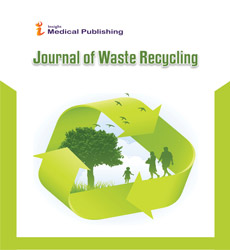
Open Access Journals
- Aquaculture & Veterinary Science
- Chemistry & Chemical Sciences
- Clinical Sciences
- Engineering
- General Science
- Genetics & Molecular Biology
- Health Care & Nursing
- Immunology & Microbiology
- Materials Science
- Mathematics & Physics
- Medical Sciences
- Neurology & Psychiatry
- Oncology & Cancer Science
- Pharmaceutical Sciences
